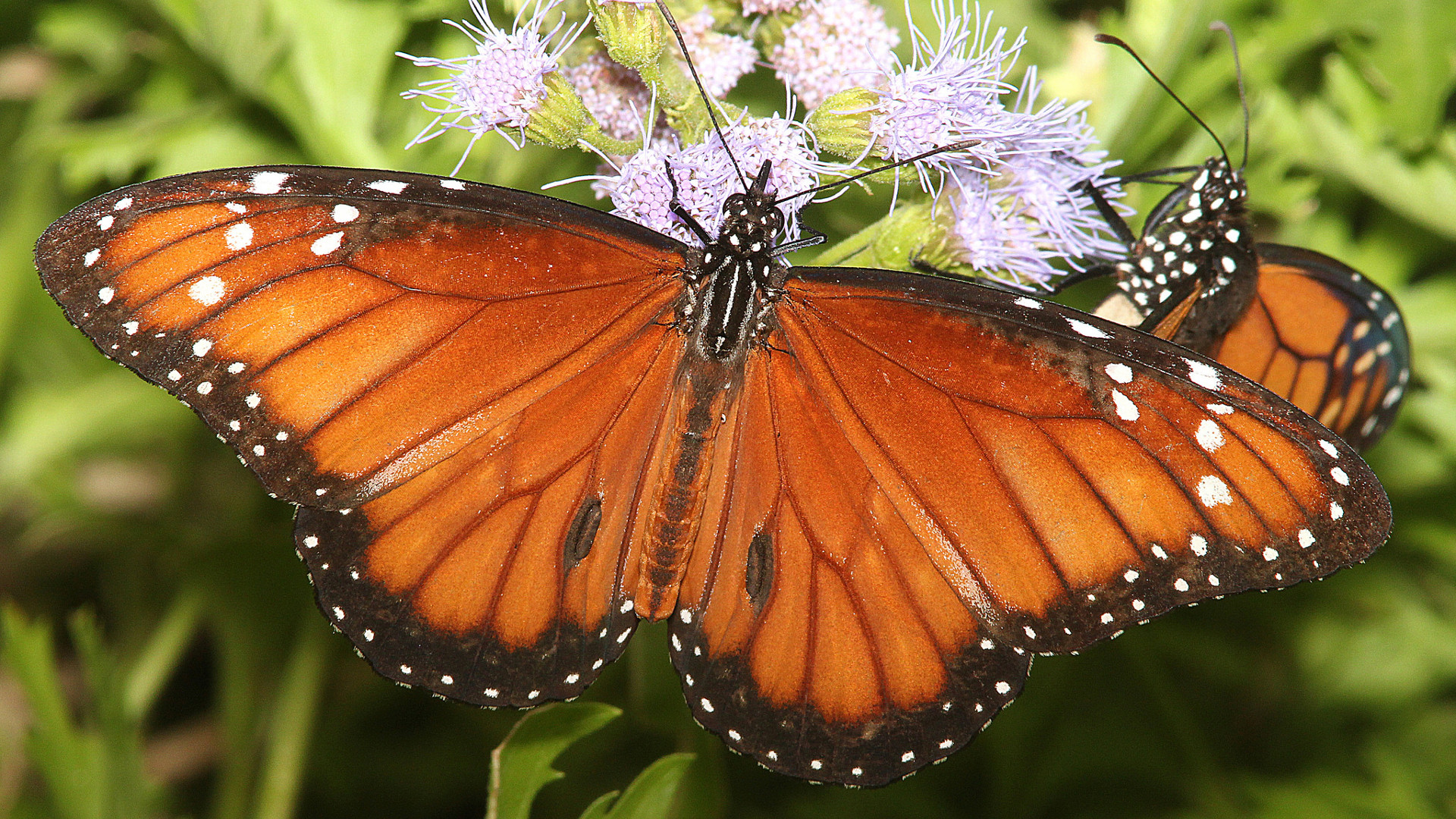Don’t mess with Texas butterflies. They have lawyers.
This week attorneys representing the North American Butterfly Association filed a suit against the Trump administration for its plan to build a section of the U.S.-Mexico border wall through a significant portion of the National Butterfly Center in Mission, Texas. The construction plan would cut off the organization’s access “to no less than two-thirds of the Butterfly Center property” just north of the Rio Grande River, according to the lawsuit.
The lawsuit was officially filed Monday against the Department of Homeland Security and U.S. Customs and Border Protection, the agencies responsible for building and patrolling the wall.
The filing, provided to The Revelator by the National Butterfly Center, also alleges that “the Agencies and their agents and contractors have entered, damaged and destroyed NABA’s private property without authorization or permission” — details The Revelator uncovered when we originally reported on this story last July. At the time Executive Director Marianna Trevino Wright said crews had chopped down “dozens, perhaps hundreds,” of trees, shrubs and other plants. She captured the damage on video.
As we reported in July, Customs and Border Protection and the U.S. Army Corps of Engineers admitted entering the private property but repeatedly denied they had removed any vegetation. After nearly a week of inquiries, Customs officials admitted that the tree-removal had actually taken place.
The unexpected presence of border agents reportedly continues practically to this day. In a phone call on Tuesday, Wright said that a customs agent had been on their property in late November turning visitors away from the area near where the border wall would be built.
That part of their property has been unexpectedly popular lately. “All kinds of folks have been coming here, saying they want to see where the wall is going to go,” Wright says. “People have said they wanted to see this place before the landscape is marred by this atrocity.”
What comes next is unclear. Even though the lawsuit has been filed, Wright says she remains worried about how all of this will play out. She’s also concerned that people will stop paying attention. “I don’t know at what point this becomes old news,” she says. “I think people are getting sort of tired of these crises. I mean, every day it’s some new thing with Trump. People are maybe getting desensitized to all of this. But maybe I’m wrong.”



NABA, the North American Butterfly Association works in the continent’s entirety to maintain butterfly populations.
CBD understands the sodality, the vital intimacy of all organisms. In between, are such organizations as The Xerces Society for Invertebrate Conservation, named after a blue butterfly whose lives were extinguished by the expansion of San Francisco into the coastal dunes of what’s now called the Sunset District
Apt, I reckon.
The latter org keeps a close eye on as many North American pollinators as can be found. They also create status reviews and petitions under US ESA.
Readers and supporting members of CBD’s efforts will be almost immeasurably enriched by exploring the roles invertebrates and pollinators play, as well as better grounding themselves wherever they may roam, and increasing their attention to life through familiarity with earth’s beings at that scale.
There was a day last fall when I was suddenly aroused to attention by two cabbage moths.
A third approached, and the seeming random fluttering of one, likely male from his behaviors, arrowed him straight to the interloper among the last flowers of the season, in an area containing blooms much of the year, and holding an endemic little wildflower seen nowhere on earth but the few miles one can scan from any small hillock.
The whole event, the likely unflappable female and the highly attentive and interactive protective male (I had considered hierarchy, rejecting it as unlikely; all I could see was astonishingly unambiguous vectors of attention, and probably behavioral signaling). It all went on undeniably assertivley, until the visitor fluttered for quieter efflorescences, away.
I do admit to watching bumblebees choice of flowers as much as sharks’ tentative engrossment around other fish, and the pricked ears of wolf or deer, responsive to company undetectable for minutes before their object sauntered into the view of my limited senses. So I have a history of associating with locals of any stripe.
There was another, more distant autumn, when sitting in the sun in an emerald mirroring sea, I once looked north. A thin black cloud had materialized above the glassy ocean.
I watched. It came.
I was surrounded by millions of Monarch Butterflies, but one could stretch to look at them like an orange and black carpet, sink to watch that same seeming aimless bouncy flight, and bend or lay to see them encompassing my whole sky.
over quarter mile wide, and taking almost twenty minutes to pass, They were on their way to an unknown respite, a winter sojourn, I knew not where.
It was possibly a memory, a directed propensity like that of wolf’s eagerness to follow scent into winter wind, in this case eye or antennae or ferric neuron, prepossessed by luring ancient warm asylum. Perhaps originally even to the city on the peninsula to the south, where once had most reasonably existed – only a few decades past – the sheltering Torrey Pines.
But I never heard of nor saw them again, asking like a lost stranger for decades now.
Perhaps I was the only one; there are nights when only if one listens, one can hear the consultation or happiness of geese bound here from cold Aleutian islands.
What they say has portent, moment, though they pass in learned obscurity outside the surveillance and even the perception of those who level gunfire and death.